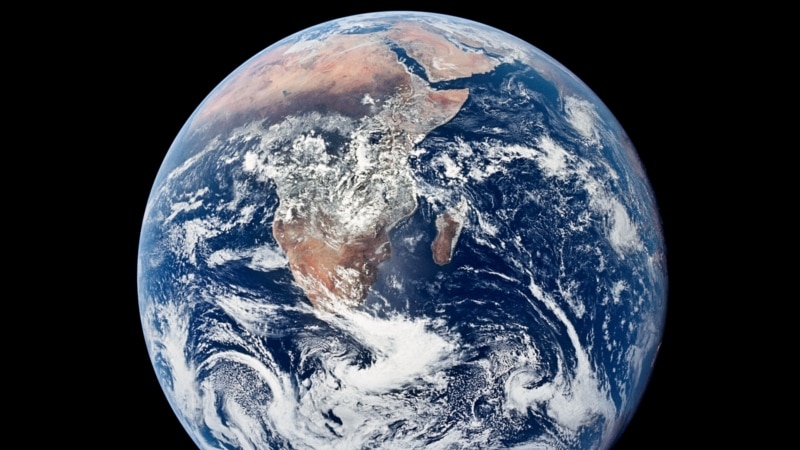The currents that reach the sea in most Latin American countries drag tons of plastic and other waste every minute into the Pacific and Atlantic oceans, the largest on the planet. In some Central American countries, conflicts have even broken out between neighbors, more due to the whim of nature than to dump garbage into the sea.
The inhabitants of the Bahía de Omoa, in Honduras, discover more and more frequently how the coasts are covered with garbage carried by the Motagua river in Guatemala to the sea, which in turn is washed ashore by the Atlantic currents in that area. inside, as an exception, and cause conflict.
A new Global Ocean Treaty was approved over the weekend by the United Nations (UN) after 15 years of negotiations to create international guidelines for the protection of the seas.
The new treaty that must be ratified by the member States of the world consensus -before it enters into force- has deepened the guidelines to protect international waters, beyond 200 nautical miles (370 kilometers) from the Special Economic Zones (ZEE ) that correspond to each country, but with future links on the actions in these for the global impact.
The research expert on Climate Change, Ricardo Álvarez, tells the voice of america that the agreement “is a great advance”, but there is still a long way to go to see concrete results on the protection of the oceans.
Thorny issues on the use of international waters are also missing, such as the military practices that powers usually carry out in those areas. And on the ground it will also remain to be seen how interested countries are in promptly joining the treaty.
The first stage is already over because “the ship has arrived at port” and no major changes are expected because “there will be no reopening or substantial negotiations” Rena Lee, president of the negotiating conference of the agreement at the headquarters of the UN in New York.
Up to now, there are no legal protection mechanisms for the waters without owners -and all of them at the same time- that represent up to 60% of the salty aquatic mass of the planet, for which reason Álvarez considers the treaty “key” because in that broad zone of common use of the countries, until now there has been a lack of “regulations that apply to the whole world and that are accepted by the whole world”.
Professor Ellen Pikitch, from the Chair of Ocean Conservation Science at Stony Brook University, in New York, commented on social networks on Tuesday -by attaching a scientific article on the matter- about the importance of the step taken by nations.
“A momentous occasion to celebrate, for the ocean, the planet and all of us. After decades of discussion and negotiation, an international agreement has been reached that allows for the protection of the high seas,” she commented.
The goals, the world and Latin America
The approval of this treaty by the UN aims to promote an effort to conserve 30% of the land and oceans as a goal towards 2030, objectives proposed by the countries meeting in December last year in Montreal, Canada.
In this context, the Chilean Maximiliano Bello, an expert in ocean policies, part of the Mission Blue research team, and the Woodrow Wilson Center in Washington, has provided the media with some numbers that reflect the scope of the new global pact.
According to Bello, up to now only 7% of the oceans are protected with their own legislation for conservation in waters owned by some nations, and “3% is highly protected.”
In other words, “we have 97% open to exploitation, and that is very worrying due to the lack of regulation,” he said. And not to mention the high seas where less than 1% of the waters are protected.
Latin America continues to lag behind according to this expert who has carried out research on the impact of large-scale fishing developed by China in the maritime strip of Ecuador, and in other nations of the world.
Panama, which hosted the eighth global conference “Our Ocean” last week, has become the second country in the world with the highest proportion of protected areas within its maritime limits, vetoing 54.3% of its waters, followed by Chile which has 43% of its maritime strip protected.
After these nations, Costa Rica and Colombia follow, with 30%, but they are still developing management plans, “and Brazil comes behind” with 20% with “difficulties” to reach their goals.
According to Bello, Paraguay and Peru are much more behind, since they do not even reach 10% protection of their oceanic waters, the rest of the region is even below that threshold.
Garbage life in the sea and fishing
During the conference in Panama, the vice president of the Oceana Organization in Mexico, Renata Terrazas spoke with VOA on the main challenges to protect the seas.
According to Terrazas, the first and most urgent is the issue of contamination by plastics that reach the sea, “the issue of plastics has not been overcome because around two trucks are dumped into the ocean every minute.”
Then follow other priorities such as the protection of habitats for marine life, which, according to this expert, countries must reach a minimum of 30% of their marine resources by the year 2030, and another crucial and delicate issue is trawling and on a large scale that it jeopardizes the planet’s subsistence.
“Illegal fishing and overfishing is another challenge, we need more transparency to know who, how and where is fishing in our seas”, and that the point according to Terrazas is not to prohibit fishing but to manage it because a “very serious” point has been reached “of loss of key species in the survival of the seas.
On this point, the expert Maximiliano Bello believes that the Global Ocean Treaty opens opportunities for Latin America because the countries would be in a position “to control the fleets of rich countries that are removing all the resources that are tradable”, and points out how the model China’s fishing industry with high subsidies to operate in the world.
“Everything that is happening outside 200 miles is going to have a direct impact on the ecosystem, on the economy and on the people who live from those marine resources,” he said.
Connect with the Voice of America! Subscribe to our channel Youtube and activate notifications; Or, follow us on social networks: Facebook, Twitter and instagram.







![[Img #74664]](https://thelatestnews.world/wp-content/uploads/2024/12/James-Watson-The-controversial-genius-behind-the-double-helix-150x150.jpg)







